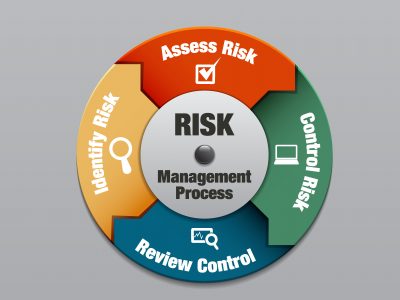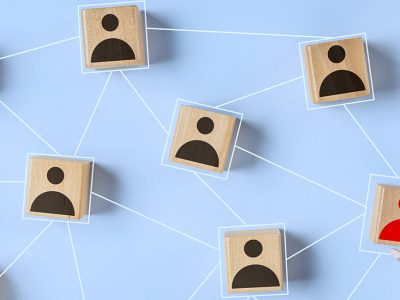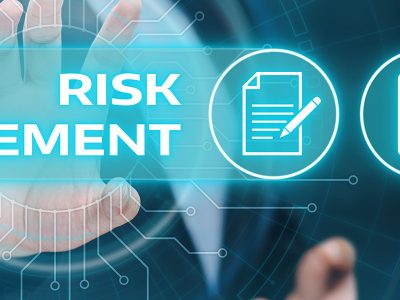Education is fulfilled only when risks associated with it are mitigated. What is the future of education? Do pandemics like COVID – 19 have not impacted education? Would these not occur again in the future? Do we need to assess the risks now or procrastinate for later?
The education system is impacted not only by the pandemics but also by the disasters and associated risks that it takes with it for the future.
Enterprise risk management (ERM) is the process of identifying and addressing AMD implementing methodically the potential events that represent risks to the achievement of strategic objectives, or to opportunities to gain competitive advantage.
An Enterprise Risk Management(ERM) process is an effective tool for developing plans to continue monitoring risks and actively plan for them. Janice Abraham, President, and CEO of United Educators mention that one of the easiest things that higher education can do is to see what the media is reporting about risks in higher education, not only in the school’s geographical area but across the nation. Also, another viable way to identify risks in higher education is to check out what kinds of risks their competitors are facing.
Thus, the Committee of Sponsoring Organizations of the Treadway Commission (COSO) defines ERM as, “a process, effected by an entity’s board of directors, management and other personnel, applied in strategy setting and across the enterprise, designed to identify potential events that may affect the entity, and manage risks to be within its risk appetite, to provide reasonable assurance regarding the achievement of entity objectives.”
Need for ERM in Education
The following are the tumultuous pressure of transforming risk management for institutions in education for the future:
- Extreme competition among faculty, students, staff, and financial resources.
- Need for increased productivity, responsiveness, and accountability while reducing costs.
- External scrutinization from government, journalists, and taxpayers groups.
- Extremely super innovational new technologies that require significant investment for both financial and human capital resources,
- The rise in increasing entrepreneurial ventures beyond the traditional educational venues creates tensions, mental stresses, and strains on traditional administrative and financial infrastructures.
- Fierce competition in the marketplace.
- High levels of litigation in general and internally, with unfathomable increasing levels of financial competition.
Effective strategies to address these drivers for change are introducing more complex risks for institutions of higher learning. Managers and leaders are in need of techniques to manage the complex portfolios of risks they now face. Thus, much of the needless are turning towards ERM to help them establish a more innovative and evolving risk mindset because it helps link institutional governance, risk management, and the strategic goals of the institution.
The benefits of ERM for a university or college can help in a leaders efforts to:
- Solidify its competitive advantage
- Shaft its integrity and reputation
- Provide feedback effectively when a significant event occurs
- Avoid unnecessary financial surprises
- Instinctively manage all of its resources
Relevance of ERM Framework in Educational Future and its development
The primary step to initiate Enterprise Risk Management(ERM) is the selection of a conceptual framework to provide an inquisitive structure to help develop a more robust view of risk oversight, one that reaches beyond the traditional university risk management practices. It should provide an overall structure, while at the same time conserving the need and want for customizing ERM practices to take into account the institution’s goals, objectives, rules, management and leadership culture, and philosophy and psychology.
Many educational institutions get to appoint a Risk Officer (RO) to foresee the implementation of ERM. The people in these positions are able to encourage and facilitate the entire organization to integrate thinking about the costs and benefits of taking risks, and how to manage them, through the entire strategic planning process. The RO performs its functions as the institution’s risk champion, encouraging and facilitating an enterprise-wide view of risks and helps lead thinking about the costs and benefits of taking risks, and how the institution manages risks through a strategic process.
Classifying Risks
Institutions classify risks into many different categories. The impact of risk has many different facets. It may be helpful for boards to classify the impact of their risks into the most common categories. Each institution may have unique categories. Here are a few to get you started.
- Strategic risks- Impacts strategic risks, causing them to fail
- Finance risks- Generates unexpected costs or loss of revenue
- Operational risks- Affects the quality of work and impacts its efficiency
- Goodwill risks- Media sensationalizes crime or other school incidents
- Social risks- Threatens the students’, faculty’s, or someone’s well-being
- Technology risks- Cybersecurity risks may leak personal or sensitive business information through applications, data, operating systems, networks, or infrastructure for criminal use
- Legal risks- Risks may instigate lawsuits against the institution
To be effective, institutions and administrators must be accountable. The best resource for ERM is learning from those who’ve been identifying and assessing risks in higher education for the long term. ERM needs to be all-pervasive in every kind of thing. Institutional committees must write risk management into their charters and senior managers must ensure that it’s written into their job descriptions.
Applicability of ERM
Debtors and critics might challenge the applicability of ERM for institutions of education on the view that ERM is relevant for the for-profit world. But such a view is denying reality. Organisations and industrial enterprises of all types, including those in higher education, operate in a competitive environment whereby they squander various strategies to meet their objectives. They thus face tremendous amounts of risk and uncertainty. So, ERM helps provide them greater risk intelligence to more effectively navigate those risks in order to increase the odds that they meet and exceed their objectives.
On the Note
There’s not a single one to question that the future will bring more and varied risks with it. The future of education is already facing new challenges due to advancements in technology, advancements in health care, and the competition with online learning institutions.
Each firm or industry, whether NPO or for-profit, carries unique types of risks with it. Because of peer populations and educational institutions related activities, institutes of higher education get to face many different types of risks than in other industries. So, enterprise risk management in higher education helps colleges and universities to identify what kinds of things could happen that could negatively impact the school’s ability to reach its goals.
Being said, an enterprise risk management (ERM) plan in higher education incorporates plans to identify risks, analyze the impact of those risks, and take steps to mitigate the risks. Governance solutions and governance software solutions are instrumental in the enterprise risk management process and in supporting good corporate governance principles as well. The need for ERM is the need of the hour.
References
https://www.boardeffect.com/blog/leverage-enterprise-risk-management-higher-education-boards/
https://www.erminsightsbycarol.com/the-future-of-erm/
Submitted By: Vaibhav Aggarwal, Member of Student Risk Club (SRC)









